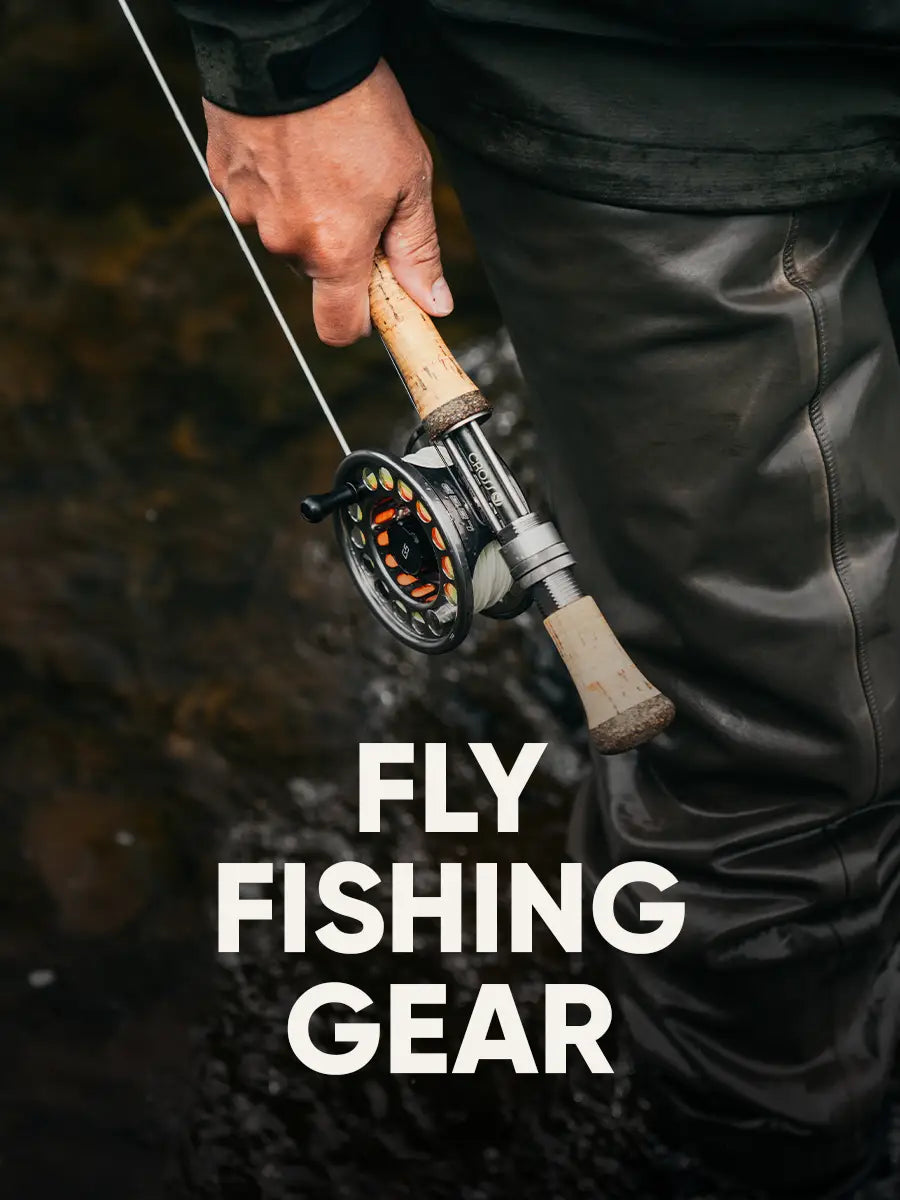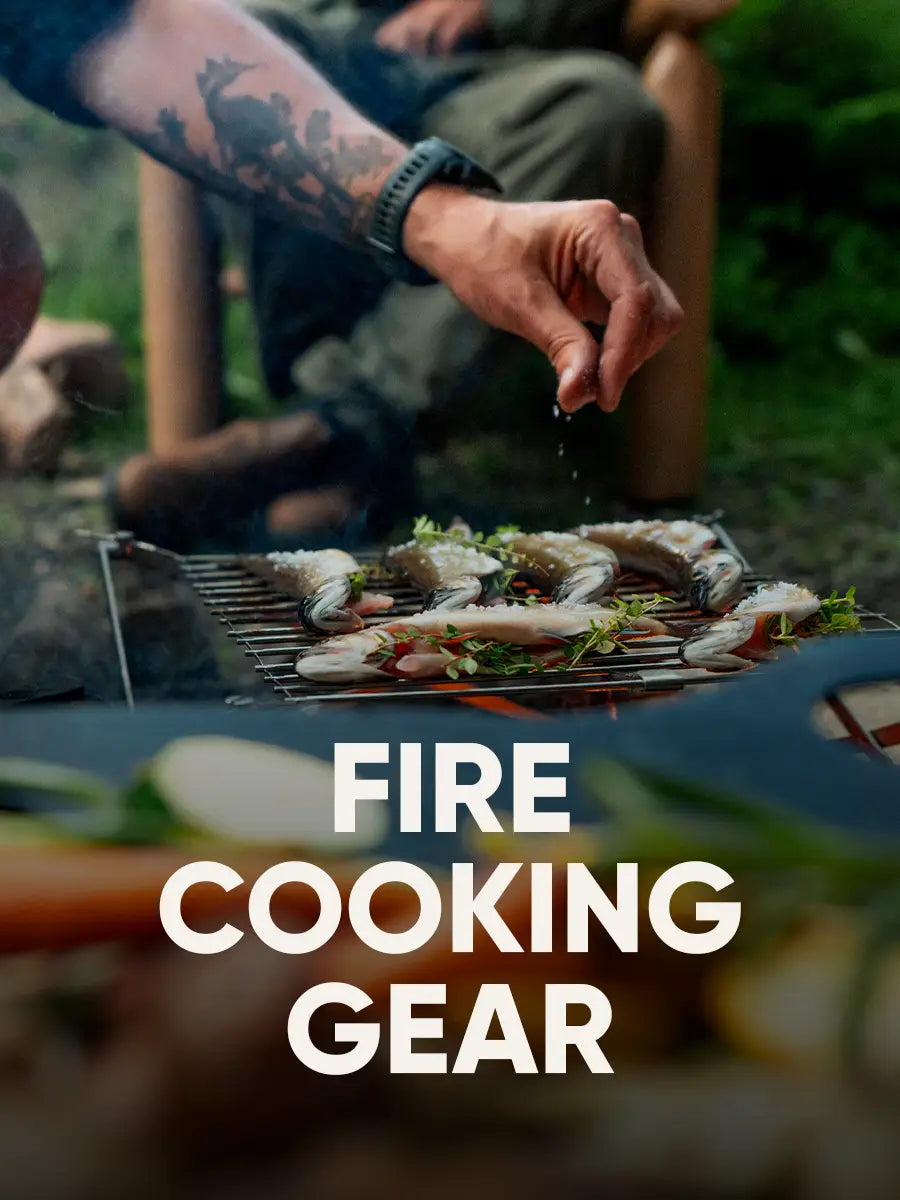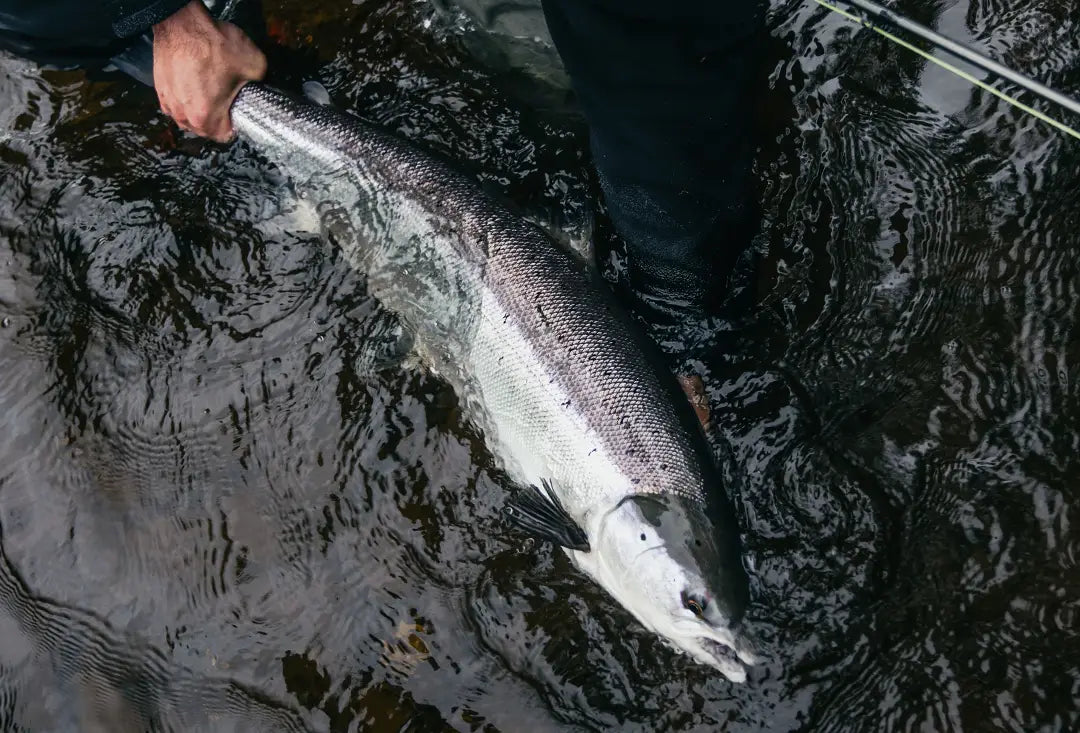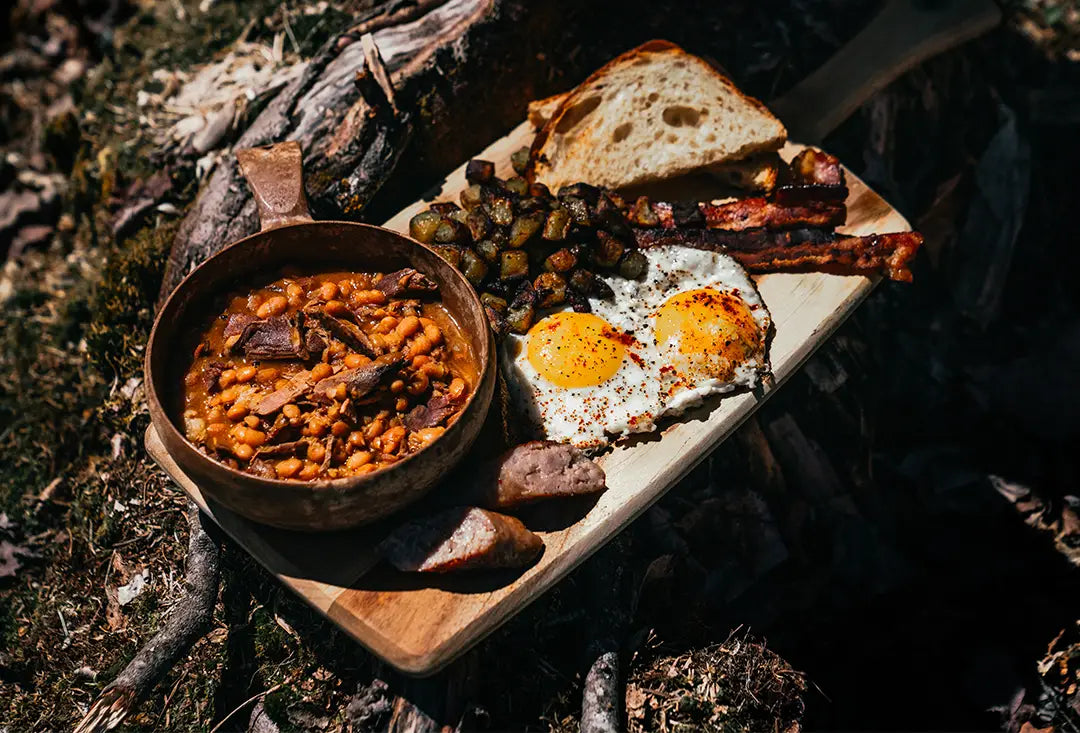The quest for your very first Atlantic salmon starts here. Find all the answers to your questions and be ready to spend your summer knees deep into the river

The province of Québec has been a big playground for us in the last 10 years. We have had the chance to explore its every corner and live beautiful adventures along the way. This territory is blessed with many rivers and streams that are home to the mythical Atlantic salmon, making it a great place for experienced anglers but also to those who want to try their hand at salmon fishing. Fly fishing is as rewarding as it can be intimidating. Therefore the reason why we made this article to guide you through the gear needed, the best practices, the access and finally some of our favorite locations.

Gear Needed for Atlantic Salmon Fishing
Before heading out to the river, beginners should ensure they have all the necessary gear. The following are the essential items required for Atlantic salmon fishing
Rod: A medium to heavy-duty rod from 9 to 10-foot with a weight #7 or #8 is recommended. We have a very diverse inventory of Loop Tackle rods to choose from.
Reel: The reel will have to match the size of the rod you choose. It should contain at least 300 feet of backing line and have a good drag.
Line: A floating line with a weight of 7 or 8, depending on the size of the rod, is best suited for salmon fishing. There are different patterns of weight forward lines that will match the different techniques and situations.
Leader: The leader is used to connect the line to the fly and therefore greatly affects its presentation. It will be important to adapt the size and length of the leader to the constantly changing techniques and conditions. Different formats and densities are available to suit all fishing conditions. In most cases, a leader of 8 lbs to 15 lbs with a length corresponding to the length of the rod is recommended.
Flies: Salmon are attracted to a variety of flies. The most common are wet flies and streamers such as the Blue Charm, Undertaker and Picasse. During the summer, dry flies can also be used to bring the fish to the surface. The size and the model of the fly will vary according to weather and water conditions.
Waders: A good pair of waders are necessary for salmon fishing, as it allows the angler to move into the water and get closer to the fish.
Landing net: A large and strong landing net is required to land the salmon after a long fight. It's also a necessary tool to unhook your salmon in the water to be able to safely release it. You will want a net that will match the fish weight and size you are targeting.
Buying this kind of equipment can be complex when unaccompanied. Our team of experts is available on the phone and on our website to chat Mondays to Fridays from 9:00 am to 5:00 pm. We also offer Sezzle so you can buy now and pay later.

Best Practices for Atlantic Salmon Fishing
Respect the fish and its environment: Atlantic salmon are a prized fish, and anglers should always respect the fish they catch. This means handling them gently and avoiding causing any harm to them. Catch-and-release is a major part of our preservation mission. It means that anglers release the fish back into the water after catching it. This helps preserve the salmon population and maintain the ecosystem. Salmon Québec is an excellent resource for those who would like to do more to protect this species.
Follow Regulations: It is essential to check the fishing regulations before heading out to the river, as these may vary depending on the location and time of year. If you want to fish for salmon in Québec, you must hold one of the Atlantic salmon fishing licences. You must personally register any salmon you catch and keep within 48 hours of leaving the fishing site. Consult the Québec Government website regarding Salmon Fishing regulations for more details.
Be Prepared: The weather can change quickly in Quebec, and anglers should be geared up for all weather conditions. We advise bringing rain garments such as the Matepedia and Caspapedia Jacket and warm clothing on the river with you. You should also be prepared to use your patience. Salmon fishing can take time, and beginners should be patient and persistent. It may take several attempts before successfully catching a fish, but just the experience of fishing in the river is rewarding.

Controlled Harvesting Zones (ZEC) and access
In Quebec, the Controlled Harvesting Zones (ZEC) are public territories that are managed by non-profit organizations whose mission is to promote the exploitation of wildlife resources and recreational activities in nature, such as fishing.
Regarding salmon fishing, some ZECs are restricted, meaning they have a limited number of fishing day permits available for the season in certain sections of the river. This way, only a specific number of anglers can be at the same salmon pit simultaneously.
Other ZECs are unrestricted or said to be public, which means there are no limits to the number of fishing day permits issued. Fishing permits for restricted ZECs are often distributed by lottery, which ensures fairness among anglers. Interested anglers must register for this lottery, which takes place before the start of the fishing season, usually around November 1st. The permits are then issued to the selected anglers.
If you are new to fly-fishing and have not participated in any lottery, don’t worry. You will still be able to get your line in the water this summer. Consult this Salmon Québec Guide 2023 to help you find unrestricted ZECs. If it’s your first time on a river, we highly suggest that you go with an experienced angler or that you go hire a fishing guide. There are many guiding companies out there such as Guide Coop in Gaspésie. A guide will facilitate your learning curve and give you all the tools to get quickly familiar with the sport.

Popular Locations for Atlantic Salmon Fishing in Quebec
Quebec Province is blessed with many incredible rivers, especially in the east. The Quebec, Charlevoix, Gaspesie and Côte-Nord region’s are home to many Atlantic salmon and are world-renowned places to fish it. Here’s some of our favourite places for fly fishing.
The Matapedia: This river is known for its large salmon and is a popular destination for anglers. Between 3,000 and 5,000 specimens swim up its waters year-round. Located in eastern Quebec, it is easily accessible. You'll find four sectors on the Matapedia, two of them public, 1 and 3. The earliest date to go fishing is May 15.
The Grand Cascapedia: Also located in Gaspésie, this river is renowned for its large salmon and crystal-clear water. It's a popular river for anglers who want to travel by canoe to access the various pools. All sections of the river are quota-restricted, which means you need to have won the draw to fish here.
The Bonaventure: This magnificent river flowing through the Gaspé Peninsula is renowned for the beauty of its scenery and the excellence of its fishing. With 98 pools and 8 sectors, including 3 with non-contingent access, it's a must for any self-respecting angler.
The Gouffre:This river is located in the Charlevoix area and is easily accessible. It is a great option for those looking for a day trip from the city or tourists here for a shorter time. The whole river is an unrestricted area. We recommend that you do your research before visiting, as the floods of spring 2023 have had an impact and modified some of the river's pools.
The Moisie: Rising in Labrador's Lake Opocopa, the Moisie River flows 410 km south to join the Gulf of St. Lawrence at Moisie, a town east of Sept-Îles. With its strong flow and many rapids, it's an ideal environment for fish. The area (Zec sector 2) is non-contented.

May this season be memorable
We have a diverse and high-quality inventory of fishing equipment and technical fishing clothing to gear up for your very first season. Our team of experts is always available to answer all your questions and guide you towards the best choice for your needs.















